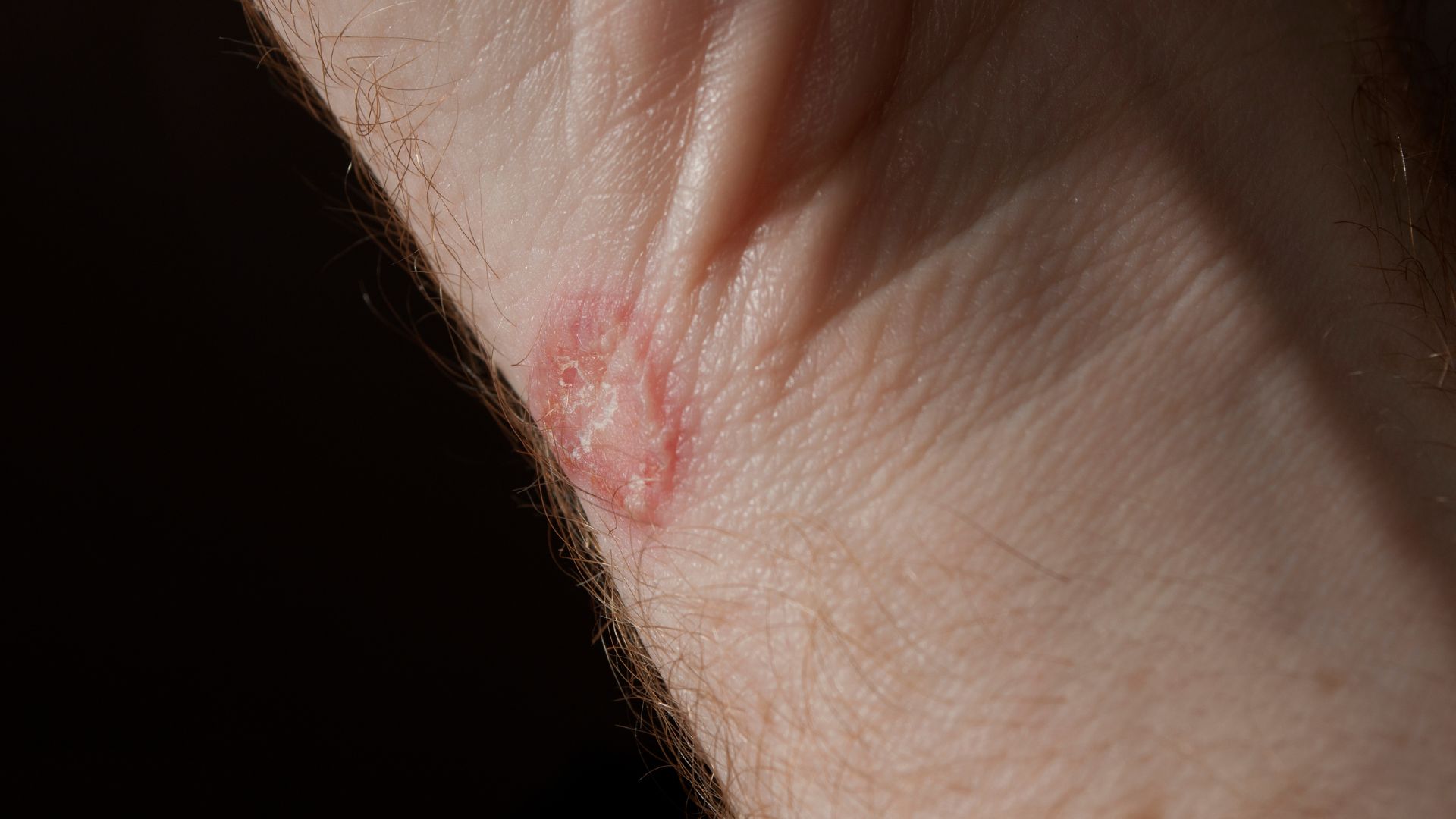Last week, my nephew came home from wrestling practice with an angry red ring on his arm. Like many parents and caregivers, my sister initially panicked – was it a burn? An allergic reaction? The culprit turned out to be ringworm, and that experience inspired me to share this comprehensive guide about why we should all maintain a healthy respect for this common but troublesome fungal infection.
What Actually Is Ringworm? (Spoiler: It’s Not a Worm)
Despite its misleading name, ringworm isn’t caused by any worm at all. It’s actually a fungal infection called “tinea” that creates ring-shaped patches on your skin. Think of it like the mushrooms that pop up in circles on your lawn (called fairy rings) – same family of organisms, just way less magical and a lot more irritating.
Why Ringworm Deserves Your Attention
1. It’s Incredibly Contagious
Remember that game of “tag” you played as a kid? Ringworm spreads even more easily. You can catch it from:
- Direct skin-to-skin contact with an infected person
- Infected pets (especially cats and dogs)
- Contaminated surfaces in gyms, locker rooms, or swimming pools
- Sharing personal items like towels, clothes, or sports equipment
2. It’s Surprisingly Resilient
These fungi are the ultimate survivors. They can live on surfaces for months, waiting for their next host. Your gym locker, wrestling mat, or even your favorite hair brush could be harboring these unwanted guests.
The Hidden Impact of Ringworm
Physical Consequences
The obvious symptoms are bad enough:
- Itchy, red, circular rashes
- Scaly or cracked skin
- Hair loss if it affects your scalp
- Potential spreading to multiple body areas
But it’s the hidden impacts that really matter. Ringworm can:
- Interfere with athletic participation
- Lead to secondary bacterial infections
- Cause permanent scarring if left untreated
- Trigger emotional distress, especially in children
Social and Emotional Effects
Let’s be real – having visible skin conditions can be emotionally taxing. People might:
- Feel self-conscious about visible rashes
- Face stigma due to misconceptions about cleanliness
- Experience anxiety about spreading it to others
- Miss out on activities due to treatment requirements
Prevention: Your First Line of Defense
Daily Habits That Matter
Think of preventing ringworm like building a fortress around your skin:
- Keep your skin clean and dry
- Change socks and underwear daily
- Don’t share personal items like combs or towels
- Wear flip-flops in public showers
- Regularly inspect pets for signs of infection
Special Considerations for Athletes
If you’re into sports, especially those with skin-to-skin contact:
- Shower immediately after practices and matches
- Use a separate towel for your face and body
- Regularly clean your gear and uniforms
- Check your skin daily for any suspicious spots
Treatment: Acting Fast Makes All the Difference
Over-the-Counter Solutions
Most cases can be treated with antifungal medications like:
- Clotrimazole
- Miconazole
- Terbinafine
Apply these medications as directed and continue use for 1-2 weeks after symptoms disappear to ensure complete eradication.
When to See a Doctor
Don’t hesitate to seek professional help if:
- The infection persists after two weeks of self-treatment
- The rash is on your scalp or beard area
- You have multiple or severe patches
- You have underlying health conditions
Protecting Your Home and Family
Creating a Fungus-Free Environment
Think beyond personal hygiene:
- Vacuum and clean floors regularly
- Wash bedding in hot water weekly
- Keep bathroom surfaces dry and clean
- Check pets regularly and treat them promptly if infected
Teaching Kids About Prevention
Make it fun! Create simple rules like:
- The “shake and pat” method for drying off completely
- The “personal space” rule for personal items
- The “superhero shield” concept for protecting skin in public places
The Bottom Line: Stay Vigilant but Don’t Panic
Ringworm is like that persistent neighbor who keeps showing up uninvited – annoying but manageable with the right approach. While it’s important to stay alert and take precautions, remember that it’s treatable and preventable.
By understanding how ringworm spreads, taking proper precautions, and knowing when to seek help, you can protect yourself and your loved ones from this persistent fungal foe. Remember, awareness and quick action are your best allies in keeping ringworm at bay.
Quick Action Guide
If you spot a suspicious ring-shaped rash:
- Begin treatment immediately
- Isolate personal items
- Inform close contacts
- Monitor for spreading
- Document the progression for medical consultation if needed
Stay informed, stay proactive, and don’t let ringworm catch you off guard. Your skin will thank you for it!



